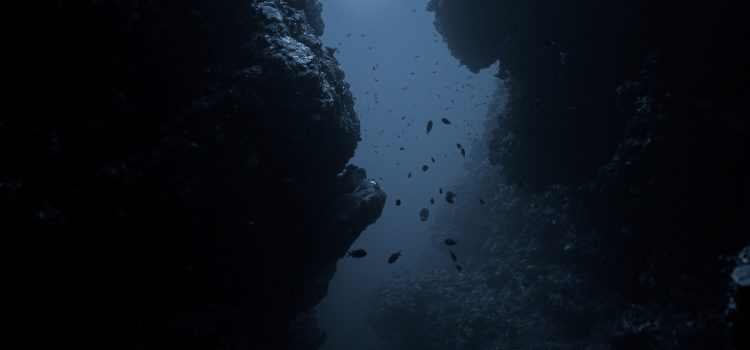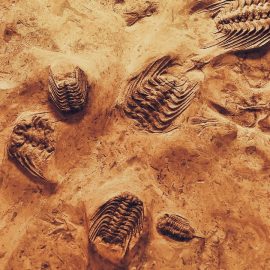

This article is an excerpt from the Shortform book guide to "The Vital Question" by Nick Lane. Shortform has the world's best summaries and analyses of books you should be reading.
Like this article? Sign up for a free trial here.
Where did life originate on Earth? How can we know?
Biochemist Nick Lane’s understanding of a cell’s requirements leads him to a hypothesis of where life began. In his book The Vital Question, he discusses the type of environment that’s best suited to give rise to the first cells.
Keep reading to learn what Lane believes is the most likely candidate for where life on Earth originated.
Where Did Life Originate on Earth?
Based on the current understanding of how cells are made and what they need, Lane believes that a certain chain of events took place that created the housings for the first living cells. First, inside a porous geologic formation with microscopic chambers the size of tiny cells, natural electrical gradients combined carbon and other common elements into organic molecules. Those molecules clustered in the formation’s nooks and crannies, where a steady stream of heat prompted them to self-organize into even more complex patterns. Eventually, some of these molecules coalesced into chains that are capable of copying themselves, while others formed the basis of internal cellular structures. But, where in the world could this sequence of events have taken place? Where did life originate on Earth?
Lane writes that taking into account the first living cells’ chemical and geophysical requirements narrows the field of possible locations where life could have begun to a single, most likely candidate: alkaline hydrothermal vents at the bottom of Earth’s primordial ocean. Lane describes the nature of these hydrothermal vents, why they were ideal for the development of life, and a scenario by which life may have evolved the ability to break free from these vents and survive in the open ocean.
(Shortform note: While Lane cites the discovery of the Lost City Hydrothermal Field in the mid-Atlantic as evidence for the existence of alkaline hydrothermal vents, several others have been found as well. These include alkaline springs off the coast of New Caledonia in the South Pacific and the Strýtan Hydrothermal Field in the waters of the coast of Iceland. Unlike the Lost City, those other two systems are in much shallower waters than the vents Lane describes.)
Alkaline hydrothermal vents are different from the more commonly known “black smoker” underwater volcanic vents that exist along oceanic ridges where continental plates are pulling apart. Alkaline vents are farther from the rift, but where molten rock from the mantle is still relatively close to the Earth’s crust. Seawater filters down through the crust, where it reacts with the mantle and spews back upward, bringing a payload of hydrogen gas and minerals from beneath the Earth’s surface. These vents create porous towers of rock that are rushing with heated water rich in chemicals—conditions that are perfect for organic compounds.
(Shortform note: Though a handful of rocks have been discovered that date back to the era during which life began, much of Lane’s discussion about the primeval sea floor is by necessity conjecture since most of Earth’s crust has been recycled by tectonic activity in the last four billion years. However, clues to Earth’s early conditions might be found on other planets where the surface has been better preserved. On Mars, where there is much less tectonic activity, ancient seabeds still exist. A study of Mars’s Eridania basin shows chemical deposits consistent with the presence of underwater alkaline vents at the same time on Mars as when life began on Earth.)
Life in the Vents
According to Lane, the micropores in these vents were the ideal cell-like structures in which the chemical precursors of life could collect. The material found in the walls of these vents, such as iron sulfide and iron hydroxide, acted as inorganic catalysts for the basic metabolic reaction of life—the conversion of hydrogen and carbon dioxide into a variety of organic molecules until finally being expelled as methane. The flow of warm, chemically saturated water provided all the energy and fuel this burgeoning ecosystem needed, while also providing a motive force to flush away the buildup of waste from the first organic reactions.
(Shortform note: This process in which life uses inorganic chemistry for fuel is referred to as chemosynthesis—as opposed to photosynthesis, in which energy comes ultimately from sunlight. Though this process began at the bottom of the ocean, some bacteria retained this metabolic strategy as life migrated away from the vents. In I Contain Multitudes, Ed Yong explains that bacteria that adapted to live inside other organisms, such as symbiotic gut bacteria in many deep-sea creatures, still thrive via chemosynthesis and use it to generate chemicals needed by their host organisms. Chemosynthetic bacteria have even made it to the Earth’s surface, such as the bacterial symbiotes in flatworms on the coast of the island of Elba.)
Lane goes on to point out that oceanic chemistry was different four billion years ago, and this was significant to the formation of life. The seas of that time had no dissolved oxygen, but they were rife with carbon dioxide, meaning they were far more acidic than today. The water emerging from these vents, however, was strongly alkaline. The fatty acids created by the vents’ ongoing chemistry congealed into a membrane-like barrier between the vents’ porous interior and the seas outside. The iron that coated the walls of the vents conducted protons from the acidic (positively charged) ocean to the alkaline (negatively charged) water in the vents’ pores, creating the electrochemical gradient that still powers all living cells today.
| Acids and Bases Lane assumes a basic understanding of acidity and alkalinity and how they relate to chemical reactions. While it’s commonly taught that how acid or alkaline a substance is can be measured on the pH scale (with acids having a pH under 7 and bases having a pH over 7), what these values actually represent is the proportion of ionized molecules in a substance. Neutral water has two atoms of hydrogen to one atom of oxygen. However, if a hydrogen nucleus is transferred from one water molecule to another, it produces a hydronium molecule (3 hydrogen, 1 oxygen) with a positive electrical charge and a hydroxyl molecule (1 hydrogen, 1 oxygen) with a negative charge. An acid is a substance with more hydronium molecules, and a base is a substance with more hydroxyls. Bases and acids cancel each other out by balancing their positive and negative ionic charges. An alkali is simply a base that’s soluble in water, such as the substances found in hydrothermal vents. |
In other words, the physical properties of alkaline vents provided all the necessary pieces for living cells to develop within them. All that was needed now for life to start was for the proteins and organic molecules inside to organize into patterns that could store information and replicate themselves. Once that happened, life was ready to emerge, spreading throughout the alkaline pores in life’s original hydrothermal home.
Life Escapes the Vent
If alkaline vents were the perfect environment for the earliest form of life on Earth, what was it that pushed that life to leave its home and explore the rest of the planet? Lane says that the answer lies in how cells make their own energy. Modern cells use an electrical voltage across a membrane to power the creation of the ATP molecule, a voltage that is created by tiny protein machines moving charged ions from one side of the membrane to another. However, inside an alkaline vent, there was no need for those proteins to evolve. The naturally conductive iron inside the vent provided all the electrical pathways that were needed—so long as the charge was from hydrogen ions.
(Shortform note: While common definitions of the term “membrane” assume it exists in a biological system, Lane uses the term in a broader sense to refer to a thin layer of material that separates chemical solutions, allowing some particles of matter through while denying passage to others. Early research on the properties of membranes was conducted by American founder and polymath Benjamin Franklin, who studied the behavior of oil floating on water and began the work that would eventually lead others to understand the role of membranes in the body.)
Lane and his colleagues have discovered certain enzymes that pump sodium ions across cell membranes in addition to hydrogen. These enzymes provide an evolutionary kick because sodium ions yield more power than hydrogen, and being able to pump them out of the cell reduces the buildup of sodium inside. However, this only works if the cell has a thicker, less permeable membrane to keep the excess sodium out. Lane proposes that the evolution of sodium-ion power prompted the evolution of stronger cell walls and freed life’s ancestors from the natural conductors found in alkaline vents. Once the cell wall and ATP-building enzymes were in place, our forebears floated free of their vents and into the ocean at large.
(Shortform note: While Lane suggests that sodium-ion power revolutionized cell development and enabled life to flourish, today some tout sodium-ion power as a possible alternative to the lithium-ion power used in electrical batteries. While sodium-ion batteries lack some of the advantages of lithium-ion power, they may turn out to be much cheaper, especially for industrial applications such as electrical vehicles. Should sodium-ion power catch on, then our cars may soon be powered by a similar reaction to the one that drives our metabolic functions.)
Lane suggests the evolutionary leap to sodium-ion power actually happened two different times, among two separate populations of cells that sprang from our last universal common ancestor. This division gave birth to the two separate domains of single-celled life: bacteria and archaea. Scientists believe this because those two separate domains found different solutions to the same evolutionary problems. Their cellular membranes, enzyme pumping machines, and even the way they metabolize carbon all function differently enough to suggest that they took separate evolutionary paths to break free from the oceanic vents. The stage was set for life to flourish, but the next giant leap in its development wouldn’t occur for two billion years.
(Shortform note: All of the events described by Lane so far took place during the Archean Eon, from roughly four billion to 2.5 billion years ago. That period comes after the Hadean Eon—literally “Hell on Earth” as magma covered much of the still-forming crust and asteroids left over from the solar system’s birth rained down in the Late Heavy Bombardment. The fossil record of the Archean Eon shows that microbial mats along early coastlines created layered deposits known as stromatolites. These deposits are the only fossil record for over 80% of the history of our planet, but though they went into decline over one billion years ago, stromatolite-producing bacteria survive to this day in places such as Australia’s western coast.)

———End of Preview———
Like what you just read? Read the rest of the world's best book summary and analysis of Nick Lane's "The Vital Question" at Shortform.
Here's what you'll find in our full The Vital Question summary:
- Why genetics alone aren't enough to explain why cells function as they do
- A theory on where all complex life originated from
- An explanation of how cells work and are made






